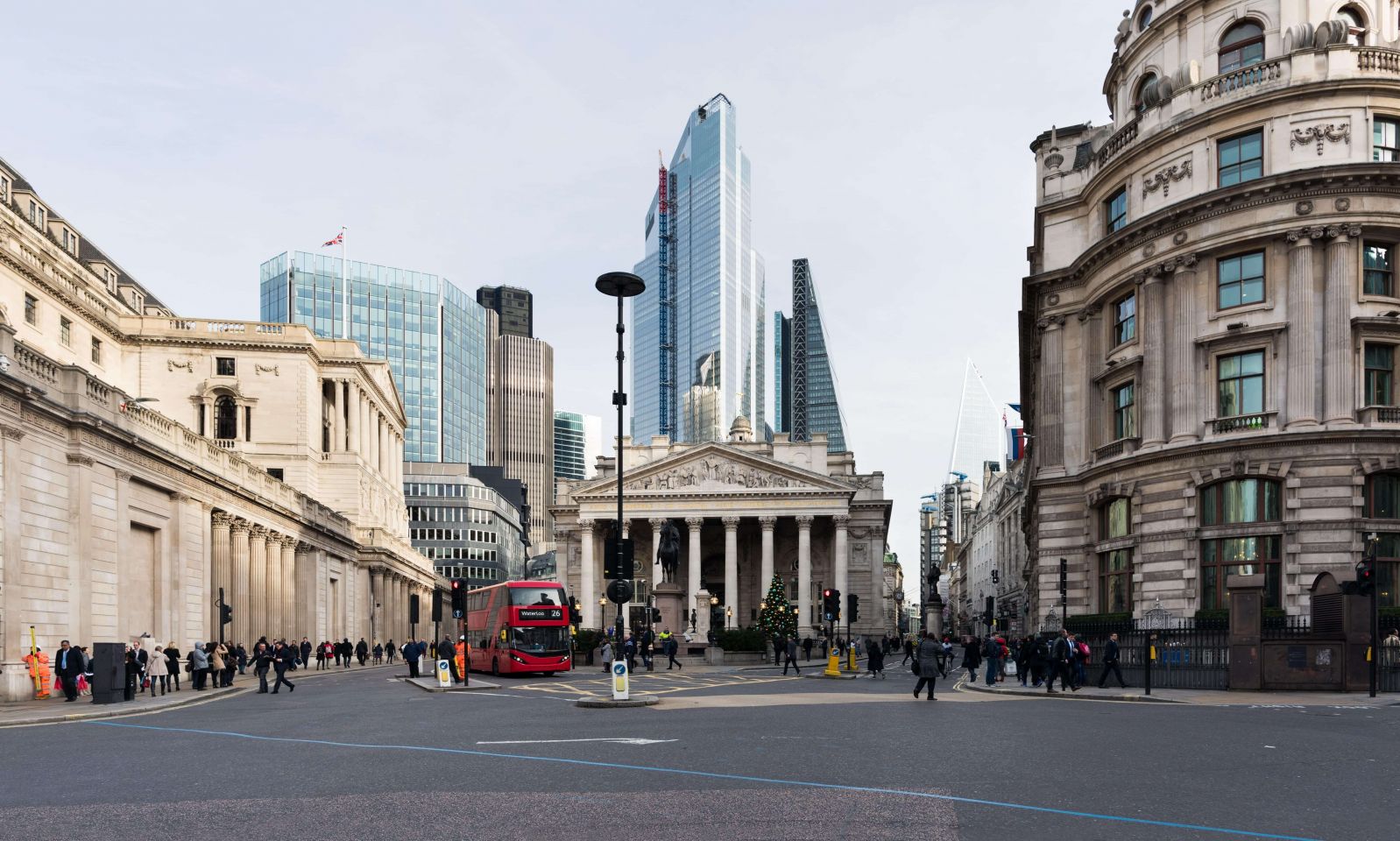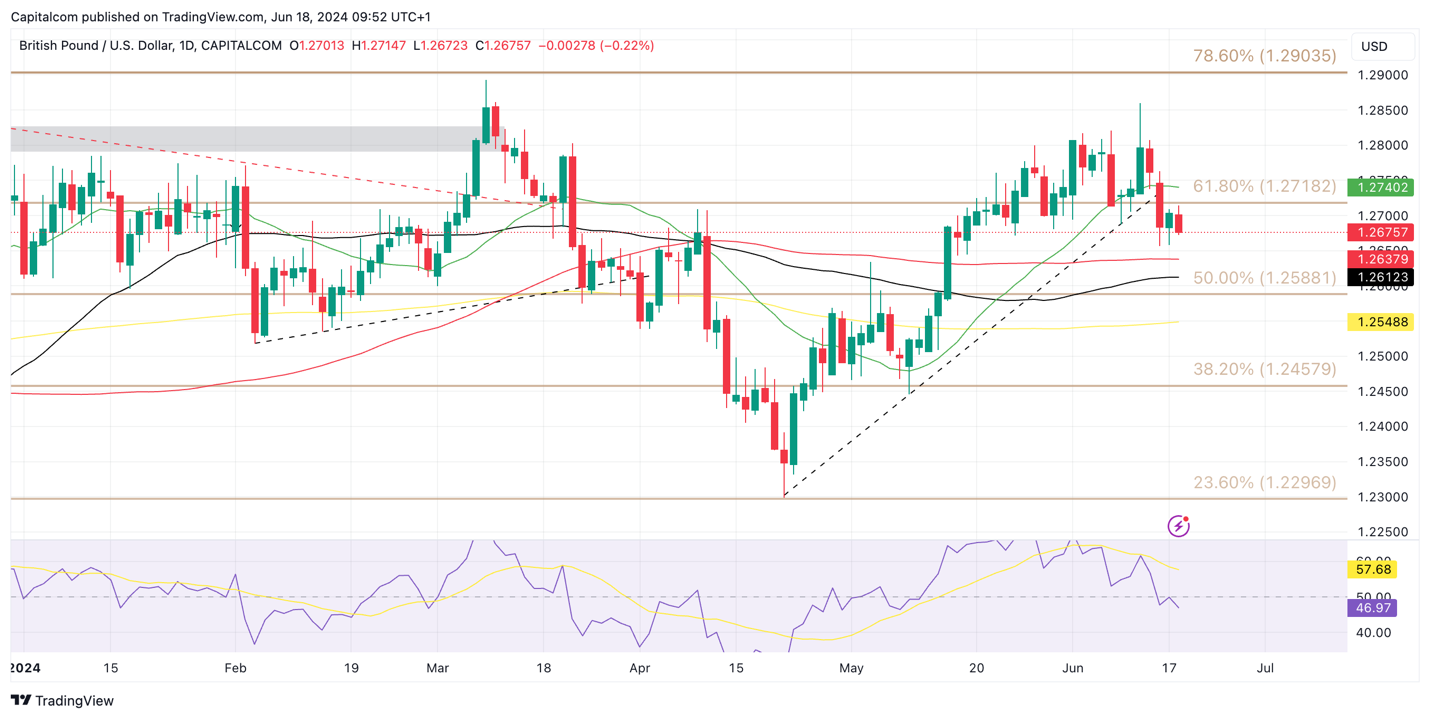Bank of England preview: no rate cut just yet despite CPI returning to 2%
The Bank of England (BoE) is widely expected to keep rates unchanged when it meets on Thursday. Analyst Daniela Harthorn looks at what this could mean
All price information and forecast data in this article are sourced from Reuters, ING
The Bank of England (BoE) is widely expected to keep rates unchanged when it meets on Thursday. Data from Reuters shows a 90% chance of no change to the current rate of 5.25%. A few months ago, June had been pointed out as the meeting when rates could start to be reduced in the UK – but stronger inflation and a resilient labour market have made the job harder for the central bank.
The fact that British citizens will be heading to the polls in two weeks also adds a layer of uncertainty that will likely keep the BoE from taking any action this month. As we’ve seen in Europe, political turmoil can weigh on market sentiment. With this in mind, the central bank is likely to wait and see what happens in the general election and how that may impact markets.
However, the decision to keep rates unchanged is unlikely to be unanimous. At the meeting in May, two Monetary Policy Committee (MPC) members voted to cut rates by 25 basis points. Swati Dhingra’s vote was expected, but Dave Ramsden’s wasn’t. This gave a dovish feel to the meeting as it was the first time since January 2020 that two MPC members had voted to cut rates. But, despite the vote split, the tone in the accompanying press release continued to show a hawkish bias from the BoE. The main takeaway was that policy needed to be kept restrictive for an extended period to ensure that inflation would stay low, even if the moves in the last few months have been encouraging.
It is unlikely that the messaging at this meeting will change much. In May, the bank released updated projections which showed inflation being revised lower. These showed that CPI is expected to return to 2% in Q2 of 2024, with longer-term forecasts having been revised lower. CPI is expected to be at 2.6% in one year (down from 2.8% in February) and at 1.9% in two years (down from 2.3%). The April CPI reading did drop significantly as predicted by Governor Bailey, but it was largely due to lower energy prices based on regulatory caps. Core inflation remains a little stickier, and wages data for April continued to come in higher than expected. With the UK economy no longer in recession in Q1, the chances of a rate cut are slim.
Markets – and the BoE – will likely be paying close attention to the May CPI report which will be released on Wednesday, the day before the meeting. Forecasts show the headline reading coming in at 2% – the long-term target – and core inflation dropping to 3.5% from 3.9%. A drop to 2% would be a significant milestone and could see some strong reactions in markets as they start to price in a higher chance of a rate cut in subsequent meetings. How core inflation evolves is likely to be of more significance for the central bank, especially in regard to services inflation, as this has been the stickiest of all in recent months.
May CPI predictions from Refinitiv
 Focusing on the meeting, the vote split will again be important. If it remains at 7-2 then markets may focus on the messaging accompanying the decision and whether it continues to show the same hawkish tone. Meanwhile, if we see a 6-3 split, meaning another member has voted in favour of a rate cut, then the more dovish outlook could spark a rally in the FTSE 100 and weigh on the British Pound. Seemingly, a more hawkish outlook, which sees one of the two previous members voting for a cut no longer doing so, could weigh on UK shares while giving the pound a small boost as rate differentials play in its favour.
Focusing on the meeting, the vote split will again be important. If it remains at 7-2 then markets may focus on the messaging accompanying the decision and whether it continues to show the same hawkish tone. Meanwhile, if we see a 6-3 split, meaning another member has voted in favour of a rate cut, then the more dovish outlook could spark a rally in the FTSE 100 and weigh on the British Pound. Seemingly, a more hawkish outlook, which sees one of the two previous members voting for a cut no longer doing so, could weigh on UK shares while giving the pound a small boost as rate differentials play in its favour.
Current market pricing shows a 25bps cut could be delivered between September and November. How these expectations evolve after the meeting will likely impact UK assets.
GBP/USD daily chart
 Past performance is not a reliable indicator of future results.
Past performance is not a reliable indicator of future results.